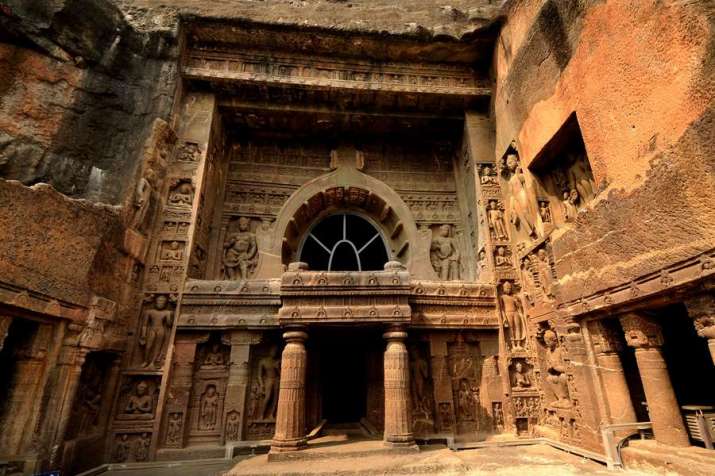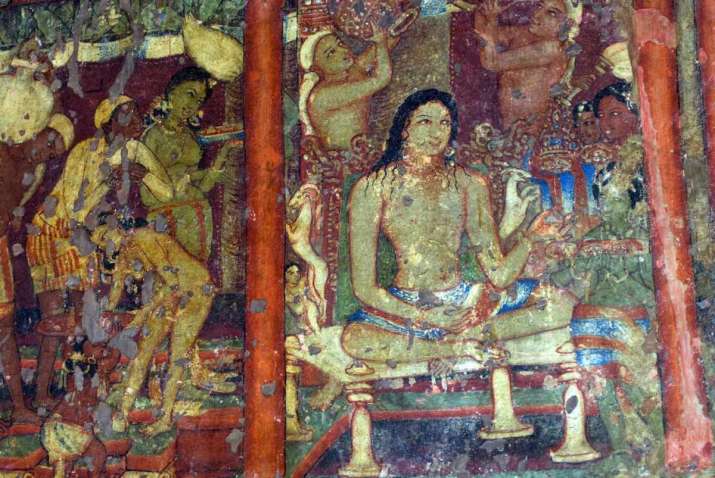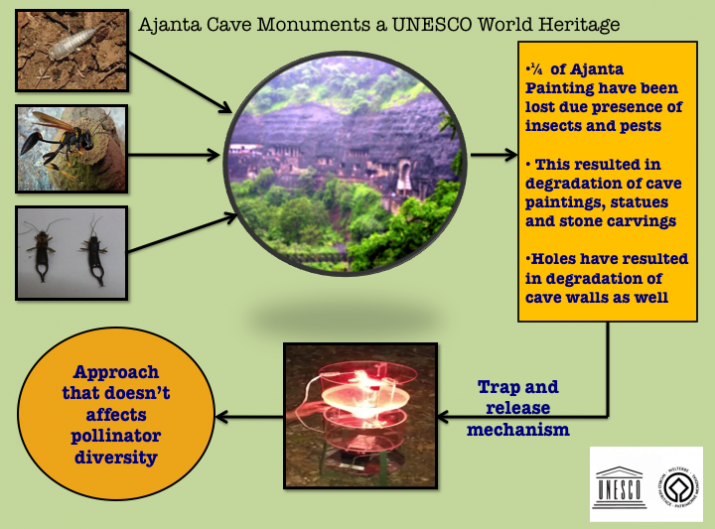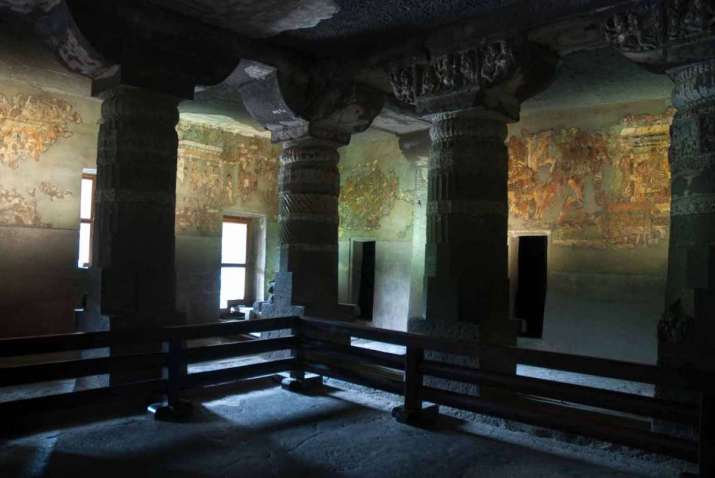
Widely hailed as the home to multiple masterpieces of early Buddhist art, the Ajanta caves in India, a UNESCO World Heritage Site, are fighting a losing battle against insects and other environmental factors, which have caused marked deterioration over recent decades, according to the findings of a new study published in the journal Heritage.
The research report, authored by a team from India’s CSIR-National Environmental Engineering Research Institute (CSIR-NEERI), highlights the ongoing damage to the caves and their contents due to insects and other pests, coupled with increasing anthropogenic and climatic stressors, and examines possible approaches and methodologies for mitigating further degradation.
“Cave monuments are habitats to microbes, algae, fungi, and insects, and are unique biodiversity sites due to their low temperature, little to no sunlight, and high moisture conditions,” the study’s authors state in the report abstract. “This study takes stock of available information on important factors that facilitate the growth of insect pests and degrade heritage monuments.”
The CSIR-NEERI is a research institute created and funded by the Indian government.
The Ajanta caves, in the Indian state of Maharashtra, are composed of some 30 rock-cut Buddhist grottoes of immense cultural and historic value that date from the second century BCE to about 480 CE. Among the artifacts contained within the caves are paintings and rock-cut sculptures considered to be among the finest extant examples of ancient Indian art. Paintings and sculptures depict scenes and events from the life of the Buddha and various divinities, along with depictions of the Jataka tales. The cave themselves include chaityas (shrines) dedicated to the Buddha, and viharas (monasteries) used by Buddhist monks for study and meditation.
Penetration of the cave roofs by the roots of woody vegetation above has resulted in cracks and fissures that allow water to penetrate the interior and provide entry to algae, fungi, insects, and microbes, the researchers say.
At particular risk are the numerous expressive paintings that are noted for their realistic depictions of emotion through gesture, pose, and form. According to the report, egresses of rain and water flows from the nearby Waghura River create a moist atmosphere within the caves, encouraging the growth of algae, fungi, insects, and microbes—with the most common pests being silverfish, beetles, and other common insects. In addition to damaging the surfaces they flourish upon, algae, fungi, and microbes also serve as a food source to populations of insects inside the damp cave environments. Bat and bird excreta contribute to the damage.

The presence of all of these factors has significantly degraded the ancient paintings, yellowing white pigments and fading blues into green, the study authors write. Around a quarter of the paintings in the caves are reported to have been lost due to damage caused by these natural threats. The report also notes the deterioration of stone-cut pillars in the caves due to water damage, along with damage to statues and other stone carvings.
Among the ameliorative and preservative actions proposed by the researchers, they report that a mixture of hemp, clay, and lime plaster has been found to be effective for preserving paintings and carvings in nearby Ellora caves, by helping to regulate humidity and control insect populations. They also propose using colored lamps to control insect populations, based on the phototactic behavior of insects to light of different wave lengths, for example using ultraviolet light traps to attract certain nocturnal insects, and yellow light traps to draw diurnal insect species.

“Based on the details collected from past studies, we are developing a prototype to address this issue. As it is in the initial stages, more details cannot be disclosed,” said one of the paper’s authors, Piyush Kokate. (The Hindu)
The Ajanta caves were “rediscovered” in modern times by a British cavalry officer, Captain John Smith, during a tiger hunt in 1819. With the aid of local residents, to whom the existence of the caves was already known, Smith was guided to the entrance of Cave No.10 and the party proceeded to clear the rubble and undergrowth that obscured the entrance. News of the discovery spread rapidly and within decades the caves had become a renowned site of unique archaeological interest. In 1848, the Royal Asiatic Society established the Bombay Cave Temple Commission to excavate and record the most important rock-cut sites in the region. In 1861 this became the Archaeological Survey of India, which survives to the present day as a government agency attached to the Ministry of Culture, charged with archaeological research and the conservation across the country. The caves were declared a UNESCO World Heritage Site in 1983.

See more
Deterioration of World Heritage Cave Monument of Ajanta, India: Insights to Important Biological Agents and Environment Friendly Solutions (Heritage)
How insects, pests wipe off Ajanta cave paintings (The Hindu)
Ajanta Caves: A glowing tribute to the artists of ancient India (my nation)












